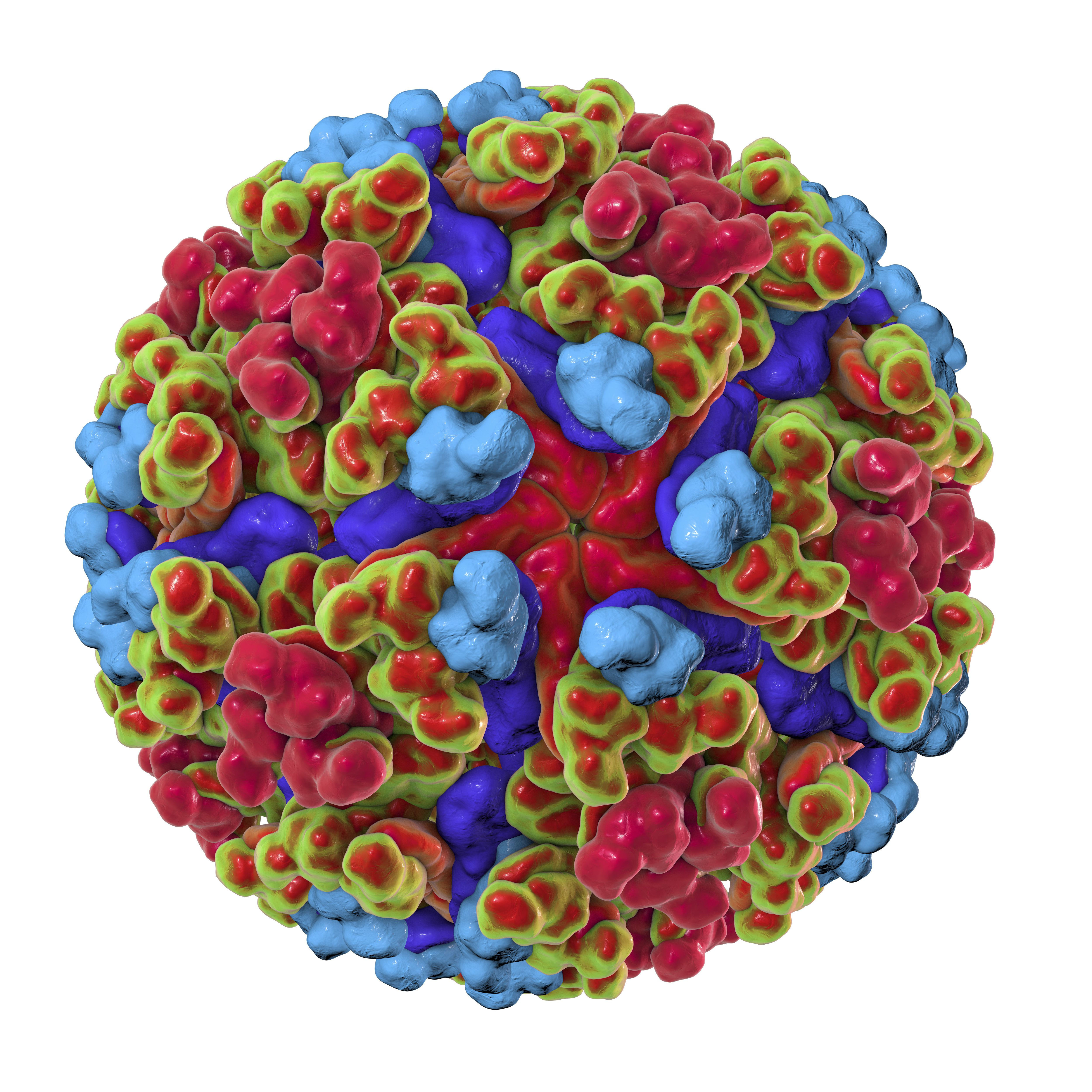
What is the Chikungunya virus?
The Chikungunya virus, CHIK virus for short, is a feverish infection that is counted among the so-called travel diseases. The pathogen is transmitted to humans by mosquitoes, especially the Asian tiger mosquito . In addition to the very high fever, severe muscle and joint pain are characteristic Chikungunya symptoms.
Where does the Chikungunya virus mainly occur?
Chikungunya is mainly found in African and Asian countries. However, it is also found in the more tropical regions of India and on the Pacific islands. In 2013, chikungunya virus was introduced to the Caribbean islands and spread from there to the Central, North and South American regions. Prior to this spread, only isolated cases of travelers were known in these areas.
Due to global warming, the mosquitoes that transmit the chikungunya virus are also able to reach Europe. Already in 2007 and 2017, cases of the disease in several hundred people were recorded. In France, there have also been isolated outbreaks in recent years. According to the Robert Koch Institute, there have only been imported chikungunya cases in Germany so far. In 2019, 88 infections were detected, with most of those affected having previously stayed in Thailand. All cases detected in Switzerland and in Austria were also imported. A transmission within the own country has not yet been reported .
How is the Chikungunya virus transmitted?
The CHIK virus is almost exclusively transmitted from person to person by mosquitoes. The classic representatives are:
- Egyptian mosquito,
- Asian mosquito,
- African mosquito.
However, mosquitoes of the Culex genus can also be carriers of the Chikungunya virus.
Special attention should be paid to the Asian tiger mosquito, which is only five millimetres in size, has black and white stripes and is very active. It is currently spreading all over the world. As of today, the mosquito has already been detected in 26 European countries. In Germany, too, the Asian tiger mosquitoes are being sighted more and more often.
After the bite, the virus is spread and reproduced in the human body. If a mosquito bites again, this mosquito takes up the virus and transmits it to the next person.
What are the symptoms of the Chikungunya virus?
After an incubation period of about seven to twelve days, the first signs of illness appear. Those affected suddenly suffer a high fever with temperatures of 39 degrees and more. This can be accompanied by symptoms such as headaches and general malaise. In many cases the temperature drops again after a few days and rises again shortly afterwards . Doctors call this a biphasic course of fever. Due to the rapid rise in body temperature, it is not uncommon for infants and small children to have febrile convulsions.
Equally characteristic signs of infection with the CHIK virus are joint pain and muscle aches, which occur from the very beginning. These can become so unbearable that patients can no longer stand. It is not uncommon for swollen lymph nodes and joints to occur.
In rarer cases, there is a sore throat, abdominal pain or conjunctivitis. After about one to two weeks, chikungunya subsides.
When infected with the CHIK virus, the course of the disease varies greatly. Some do not develop any symptoms at all and others suffer from a severe course of the disease.
How is the chikungunya virus diagnosed?
Anyone who suspects that they have been infected with the CHIK virus should visit either a specialist in tropical medicine or their family doctor. If you are still in your holiday country, you can visit a clinic . Since there are no correspondingly clear early symptoms, taking the medical history can be an important clue for making the diagnosis. The doctor will then conduct a physical examination . However, in order to be able to diagnose the CHIK virus without any doubt , a blood test is unavoidable.
The CHIK virus can be clearly detected by a PCR test and thus enables a reliable diagnosis. Indirectly, the pathogen can be detected by looking for specific antibodies against the virus . These IgG antibodies can be determined from the second week and up to a few months after infection.
How is the Chikungunya virus treated?
There is no causal treatment for a CHIK infection. Therefore, only treats and alleviates the symptoms. Essential here are :
- Bed rest,
- Physical rest,
- Sufficient fluid intake,
- Ibuprofen or paracetamol to reduce fever and pain.
If there is massive pain in the joints, a therapy with cortisone can be started. Depending on the symptoms, for example conjunctivitis, further therapeutic measures may be necessary . If the course of Chikungunva fever is severe, it may be necessary for the patient to be monitored intensively in hospital .
How can the Chikungunya virus be prevented?
The most efficient and important measure is to avoid mosquito bites:
- Use sufficient insect repellent,
- Wear long trousers and long-sleeved clothing,
- Use mosquito nets,
- Avoid or eliminate water points in the vicinity.
A vaccination against the CHIK virus is not available at the moment . However, this could change in the future, as a Viennese biotechnology company is researching a live vaccine against the Chikungunya virus together with the Rostock University.
According to the Infection Protection Act, every detection of the CHIK virus must be reported by the laboratory to the competent health authority.
